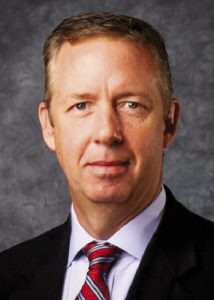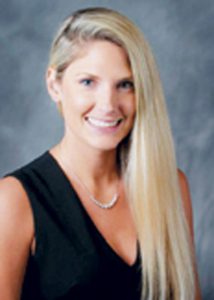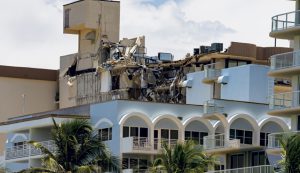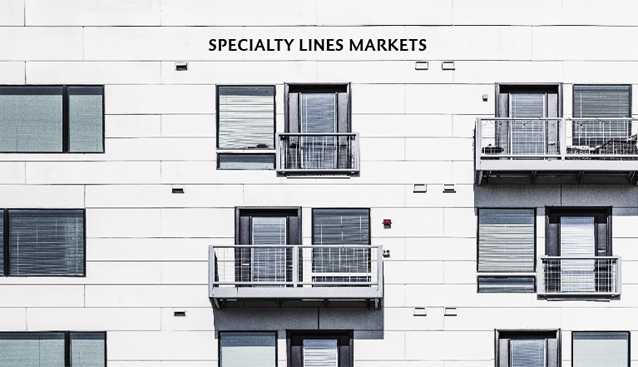CONDO ASSOCIATION INSURANCE
Threats of collapse and pandemics make a hard market even harder
By Joseph S. Harrington, CPCU
Last June’s collapse of a 12-story residential condominium building in Surfside, Florida, was not only tragic, but almost unimaginable before it actually occurred. “The property insurance market now has to address a loss that was not previously contemplated in underwriting and pricing,” says Michael Egan, NSM Insurance Group’s director of property programs, including its CHAMP program for wind-exposed coastal condominiums.

“After the initial shock [of the Surfside condo collapse] wore off, the market seems to have settled on the idea that this type of loss is unlikely but not unimaginable. Some carriers have taken a bit of knee-jerk reaction … but most are taking a more measured response.”
—Michael Egan
Director, Property Programs
NSM Insurance Group
“After the initial shock wore off,” he adds, “the market seems to have settled on the idea that this type of loss is unlikely but not unimaginable. Some carriers have taken a bit of knee-jerk reaction and ceased writing older high-rises, but most are taking a more measured response.”
Even a “measured response” to the possibility of building collapse will add to the hardening of a market for condominium association insurance that is already seeing rate hikes and tightening capacity due to natural catastrophes and growing liability losses.
“We’re seeing reduced capacity [for property coverage],” says Kim Bushong Petrillo, vice president, Coastal Insurance Underwriters. “There are fewer markets, and some carriers are restricting their risk appetites depending on the location, construction, and age of risks.”
Petrillo also sees fewer carriers willing to write condo association liability coverage, especially in Florida. Citing “social inflation” as the cause, she detects increased frequency of claims, friendlier decisions by juries towards plaintiffs, and larger jury awards.
As a result, “coverage limits are being reduced or no longer offered, especially for umbrella coverage, and exclusions maybe added for previously offered coverages.”
Simply put, “People think homeowners associations, like corporations, have bottomless pockets of money,” says Andrew Bateman, client executive at TriSure, an Alera Group company. “A lawsuit against an association affects everyone in the association, even the party that is suing, if it’s a member.”
Market impact
As a result, Bateman says, condominium and homeowners associations can expect at least a 10% increase in their next renewal rate, and that’s for “clean” accounts with no recent claims. Accounts with claims can expect 30% to 70% in-creases, he says, presuming they can even get comparable coverage.
Several associations can expect to receive non-renewal notices for their umbrella liability coverage, says Edward J. Mackoul, president of Mackoul Risk Solutions, after three of the largest risk purchasing groups (RPGs) writing umbrellas for habitational risks have announced that they’re exiting the business.
“RPG carriers are running for cover as underwriting losses continue to pile up,” he says. “When one carrier decides it wants out, it affects the other carriers and the entire program. Associations will likely have to consider lower limits of umbrella liability coverage at a higher premium than their expiring coverage.”
Associations are seeing a similar retrenchment in property coverage, according to Egan. “Most carriers are reducing their wind writings in Florida and there have been virtually no new entrants into the property marketplace in the past 12 months,” he says. “The capacity shortage extends in varying degrees to all coastal counties in the Gulf states and on the East Coast. Accounts are seeing increases in rate, often accompanied by increases in wind deductibles and limitations on coverage.”
Rigorous underwriting
The “flight to quality” by carriers and reinsurers means more rigorous underwriting of accounts, Egan adds. “Increased attention is being paid to maintenance, building upgrades, and the general condition of properties.”
In this market, associations will find insurers less willing than in the past to tolerate under-reporting of values at risk or failure to comply with underwriting recommendations, according to Petrillo.

“Condominium boards … are now expected to follow public health guidelines and take steps to protect residents. Residents may be less willing to volunteer for association boards due to the potential exposure to lawsuits.”
—Kim Bushong Petrillo
Vice President
Coastal Insurance Underwriters
“Association insurers are taking a closer look at buildings with aging infrastructure and deferred maintenance,” she says. “Engineering studies are being required for older buildings, and any structural issues will usually need to be repaired to obtain insurance coverage.”
Petrillo advises association boards to expect underwriting scrutiny to extend beyond structures to encompass the community’s finances and governance as well. Among other things, the liability exposure of board members may have been increased by the experience of the COVID-19 pandemic, when association boards were expected to close off public areas and enforce public health measures.
“Condominium boards took on additional duties during the COVID-19 pandemic,” Petrillo says. “They are now expected to follow public health guide-lines and take steps to protect residents. Residents may be less willing to volunteer for association boards due to the potential exposure to lawsuits.”
Mackoul believes the impact of theCOVID-19 pandemic will be more fleeting, but he says that the pandemic did raise one important question that is still being clarified:
Would a board and its members have a better defense under its commercial general liability policy (if it allowed common amenities to remain open, and someone sued for COVID-related bodily injury) or its directors and officers policy (if someone sued over being denied use of an amenity)?
For a variety of reasons, Mackoul says, associations for the most part shut down common amenities in 2020 and kept them shut in 2021, but are reopening them for 2022.
Sharing risk with unit owners
An abiding issue for condominium associations is how to share the risk for damage to building property with individual unit owners. The topic takes up added urgency when insurance coverage for the association is costly and hard to come by.

“More and more associations are adding by-law resolutions putting more of the onus on unit owners. In a few cases, if damage originates in a unit and damages only that unit, the unit owner is responsible for the claim.”
—Edward J. Mackoul
President
Mackoul Risk Solutions
It’s no surprise that, during the current hard market for association coverage, many associations have increased their deductibles for building property claims under their association policies. They are supported in doing so by the inclusion of a sub-limit of coverage in standard unit-owners policies for the insured’s share of an association policy deductible. (This coverage is in addition to the longstanding supplemental coverage for a unit owner’s share of an association loss assessment.)
According to Bateman, having the deductible assessed to the unit owners affected by a loss or claim makes it easier for associations to allocate costs. Otherwise, he says, unit owners do not have any “skin in the game” to encourage preventive maintenance.
When an association deductible is assessed equally among all unit owners, he says, there is no added incentive for unit owners to upgrade their own amenities to mitigate fire, wind, and water damage. Everyone pays the same share, no matter what responsibility they may have for the loss, or its effect on them.
Where permitted by law, Bateman urges associations to consider at least three alternatives to assessing the cost of association deductibles:
- Assess the entire cost of a deductible against the owner[s] of the unit[s] where the loss event originated, as an incentive for all unit owners to practice loss control;
- Assess the cost of a deductible equally among owners of all units directly affected by the loss, giving unit owners a stake in their neighbors’ maintenance and upkeep; or
- Assess the cost of a deductible proportionately among affected unit owners, another way of giving them a stake in their neighbors’ maintenance and upkeep.
Hamstrung by laws and by-laws
Bateman acknowledges that what he encourages is easier said than done.

“As a result, it is a strenuous process to institute changes.”
Egan favorably cites a recent Maryland law that now allows associations to charge up to $10,000 to the owner of a unit where a property loss originates. Resistance to the idea is exemplified, however, by resistance to legal constraints in Florida that ultimately resulted in “relatively toothless modifications,” in Egan’s estimation.
Despite such resistance, Mackoul sees evidence of a growing tendency to allocate costs of losses to individual unit owners.
“More and more associations are adding by-law resolutions putting more of the onus on unit owners,” he says. “In a few cases, if damage originates in a unit and damages only that unit, the unit owner is responsible for the claim.
“Under another approach, if a unit is affected by a loss, the owner is responsible for the association policy deductible. If multiple units are affected, they share the deductible. The only time the association has a responsibility for the deductible is when a common area is affected.”
Associations should not be shy about sharing their “high duty to repair, replace and maintain,” says Bateman. Those who hesitate to do so will find themselves competing against time as it wears on buildings and fixtures, and “time is undefeated,” he adds.
For more information:
Coastal Insurance Underwriters
www.ciuins.com
Mackoul Risk Solutions
www.mackoul.com
NSM Insurance Group
www.nsminc.com
TriSure
www.trisure.com
The author
Joseph S. Harrington, CPCU, is an independent business writer specializing in property and casualty insurance coverages and operations. For 21 years, Joe was the communications director for the American Association of Insurance Services (AAIS), a P-C advisory organization. Prior to that, Joe worked in journalism and as a reporter and editor in financial services.






